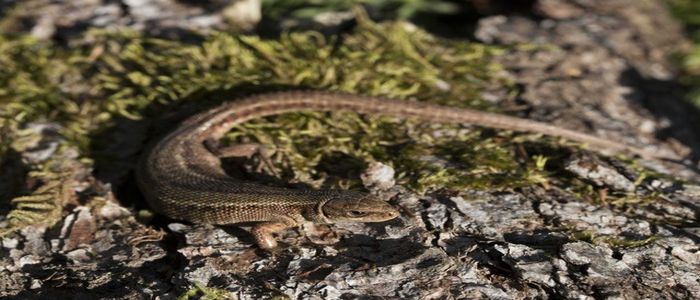Scientists pinpoint evolutionary genes which allow lizards to give birth like mammals
Published: 7 October 2021
Scientists studying the evolution of birth in lizards, from egg-laying to live births, have pinpointed the evolutionary genes from which the species is evolving to ‘build’ a new mode of reproduction.
Scientists studying the evolution of birth in lizards, from egg-laying to live births, have pinpointed the evolutionary genes from which the species is evolving to ‘build’ a new mode of reproduction.

The study – led by the University of Glasgow and published in Nature Ecology and Evolution – found that a significantly similar amount of the same genes involved in the pregnancy of lizards were shared with other mammals and live-bearing vertebrates.
Evolving from egg-laying to live birth – also known as viviparity – is a major evolutionary step; however, it is almost impossible to study the genes that lead to such major changes because when animals have evolved live-birth it was usually in the distant past.
However, the so-called Common Lizard – a species found in much of Eurasia, including Scotland – only evolved to live-birth relatively recently.
All vertebrates are either egg-laying or live-bearing, yet the genes that determined being one or the other were not known.
For the study, the scientists spent several years studying rare hybrid offspring reproduced from breeding between egg-laying and viviparous (live birthing) lizards. The researchers tracked female reproduction in natural populations in remote regions in the Alps, then used advanced genome analysis to look at how and why these lizards’ DNA differs.
The analyses revealed genetic profiles particular to live-bearing lizards included genes known to be associated with fertility and pregnancy in mammals. It also found that gene pathways of tissue growth and immune function used in mammal reproduction were active in the lizards. Genes in egg-laying traits included some involved in egg productivity in birds.
Dr Hans Recknagel, who led the field and genome research during his PhD and postdoctoral research, said: “This was fascinating research, not least because in this species of lizard egg-laying populations still occur and interbreed with live-bearing ones.
“Despite the 300 million years of evolutionary distance between reptiles and mammals, when we compared our findings across vertebrates – looking at seven independent origins of viviparity, or live birth, in mammals, squamates, and fish – we found that a significant amount of the same genes are involved in pregnancy in lizards and in mammals.”
Professor Kathryn Elmer, the study’s senior author from the University of Glasgow’s Institute of Biodiversity, Animal Health and Comparative Medicine, said: “Though the origins of viviparity, or live birth, are independent the genetic similarities are unlikely to be a coincidence.”
“This shows how evolution tends to find similar answers to the challenges organisms face. It can be using similar established genetic networks, as we found here, but also new and different genes can be involved, allowing some flexibility in how evolution ‘builds’ a new reproductive mode again and again.”
The study, ‘The functional genetic architecture of egg-laying and live-bearing reproduction in common lizards’ is published in the journal Nature Ecology and Evolution. The work was primarily funded by the UK’s Natural Environment Research Council.
Picture: Hans Recknagel
Enquiries: ali.howard@glasgow.ac.uk or elizabeth.mcmeekin@glasgow.ac.uk / 0141 330 6557 or 0141 330 4831
First published: 7 October 2021
<< October
Related Links
- Professor Kathryn Elmer - research profile
- Institute of Biodiversity, Animal Health and Comparative Medicine
- College of MVLS
- Natural Environment Research Council
- The functional genetic architecture of egg-laying and live-bearing reproduction in common lizards’ is published in the journal Nature Ecology and Evolution

